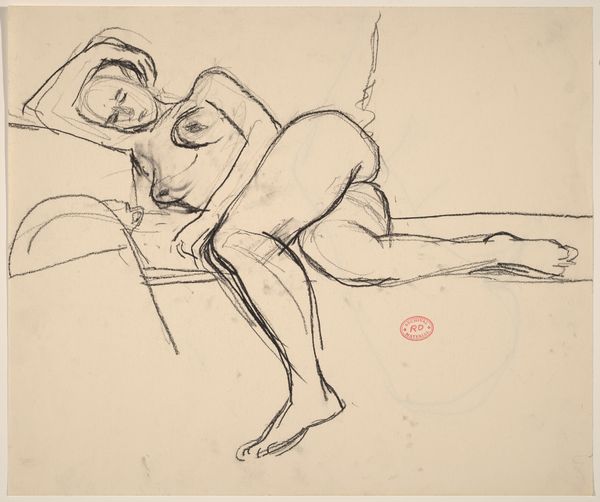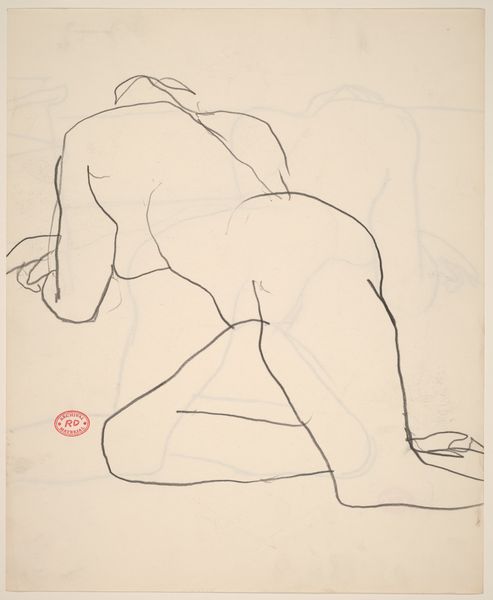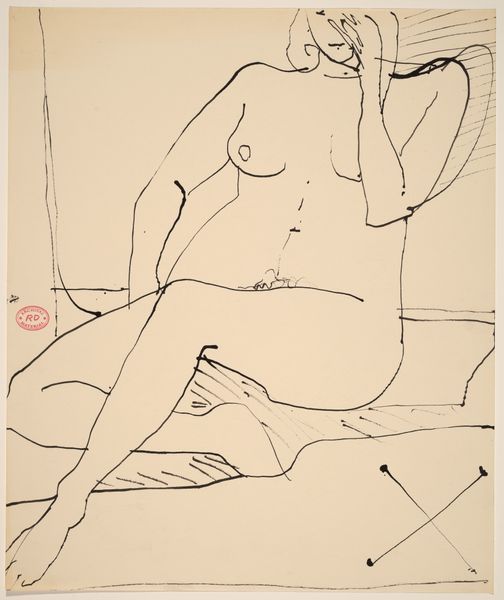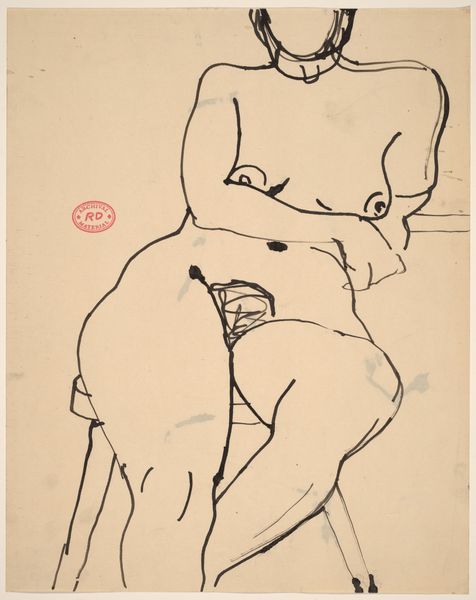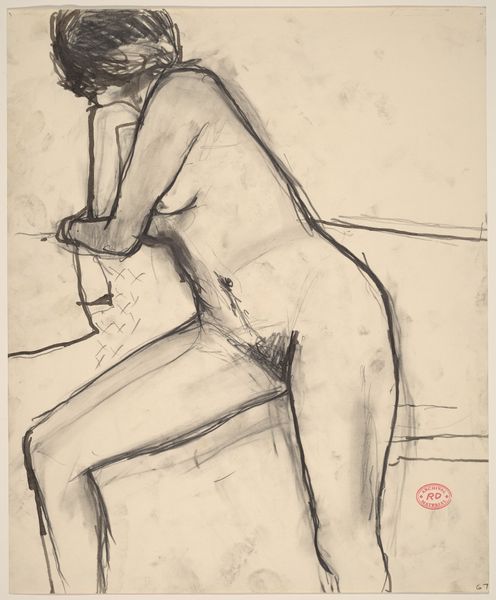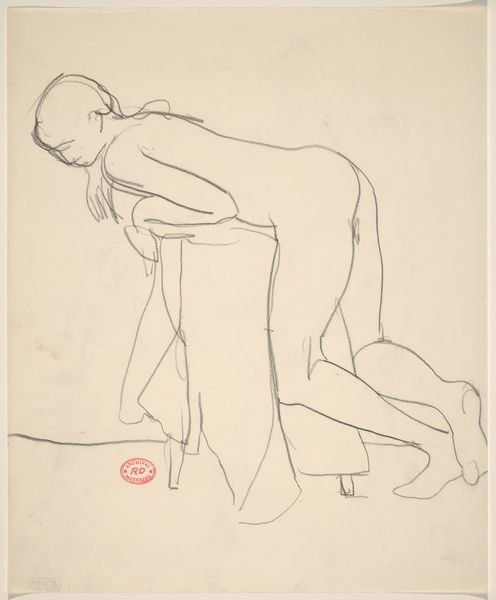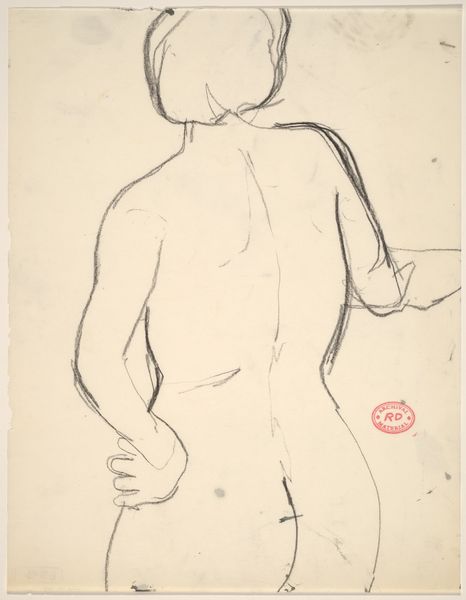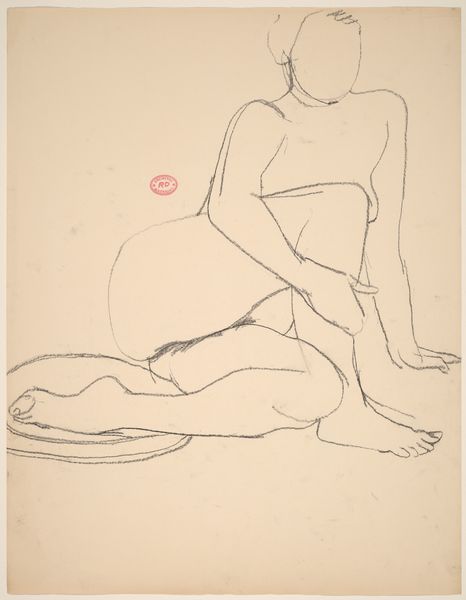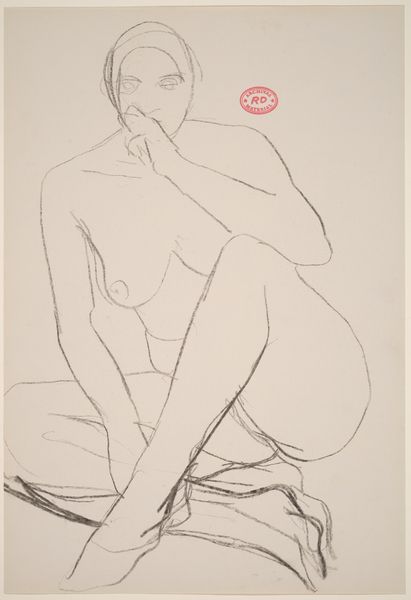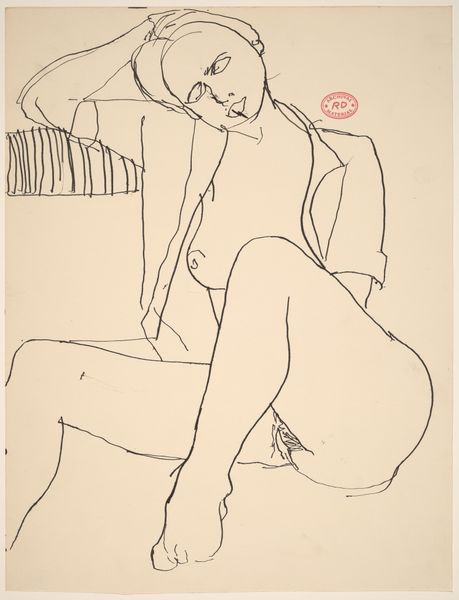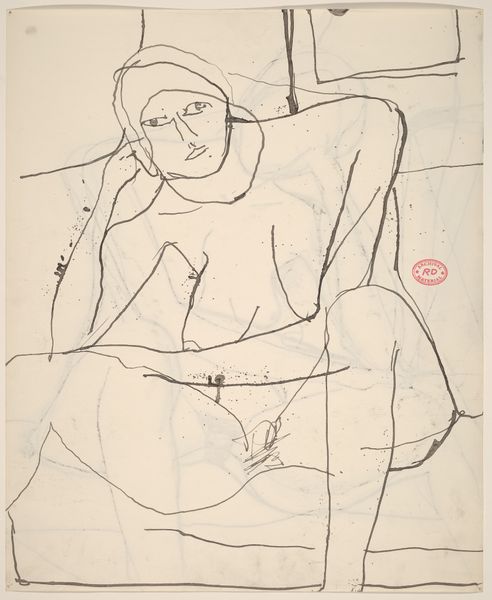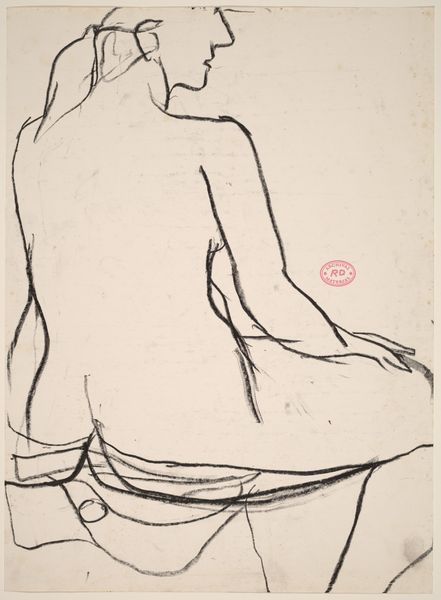![Untitled [reclining nude turning to rest on her arms] by Richard Diebenkorn](/_next/image?url=https%3A%2F%2Fd2w8kbdekdi1gv.cloudfront.net%2FeyJidWNrZXQiOiAiYXJ0ZXJhLWltYWdlcy1idWNrZXQiLCAia2V5IjogImFydHdvcmtzLzE1ZDJlN2U2LWM5MDctNDAyYS05YTdlLTk2MWM0MzU1ODAxNC8xNWQyZTdlNi1jOTA3LTQwMmEtOWE3ZS05NjFjNDM1NTgwMTRfZnVsbC5qcGciLCAiZWRpdHMiOiB7InJlc2l6ZSI6IHsid2lkdGgiOiAxOTIwLCAiaGVpZ2h0IjogMTkyMCwgImZpdCI6ICJpbnNpZGUifX19&w=3840&q=75)
Untitled [reclining nude turning to rest on her arms] 1955 - 1967
0:00
0:00
drawing
#
drawing
#
ink drawing
#
figuration
#
bay-area-figurative-movement
#
nude
#
modernism
Dimensions: overall: 43.2 x 35.5 cm (17 x 14 in.)
Copyright: National Gallery of Art: CC0 1.0
Editor: This is an untitled ink drawing by Richard Diebenkorn, created sometime between 1955 and 1967. It depicts a reclining nude, turning to rest on her arms. What I find interesting is how raw and vulnerable the figure feels, despite the simplicity of the lines. What do you see in this piece? Curator: It's a study of form, certainly, but I think it invites us to consider the gaze. Whose gaze are we assuming when viewing this figure? The artist’s, obviously, but more broadly, it begs the question of how the female form is historically presented and consumed within art. Do you think Diebenkorn challenges the conventional male gaze, or does he perpetuate it? Editor: That’s a great question! The incompleteness of the drawing, the sketch-like quality, maybe disrupts that objectification somehow. It feels less about capturing a perfect form and more about capturing a fleeting moment, or feeling. Curator: Exactly. The loose lines and the absence of distinct facial features shift the emphasis away from the individual and towards the experience of being perceived, examined. The reclining nude as a subject is fraught with historical baggage, largely dictated by men. I’m thinking of Titian and Manet, for example. Diebenkorn subtly subverts the hyper-idealization often found in earlier portrayals. How does this inform your interpretation? Editor: It makes me see the figure as less of an object and more of a person caught in a moment of introspection, even discomfort. The title itself is telling—Untitled—as if to avoid any definitive narrative. Curator: And that ambiguity is crucial. It opens up a space for dialogue around how we view and interpret bodies, particularly female bodies, in art. It also calls to mind movements to decolonise our museums, collections and institutions of power and control, domination, privilege and agency in artistic practice. Editor: I hadn’t considered the artwork in that broader cultural context before, but now I definitely see new layers. Thank you. Curator: It’s about consistently challenging those traditional power structures, viewing art as a vital platform for activism and transformative social change.
Comments
No comments
Be the first to comment and join the conversation on the ultimate creative platform.


